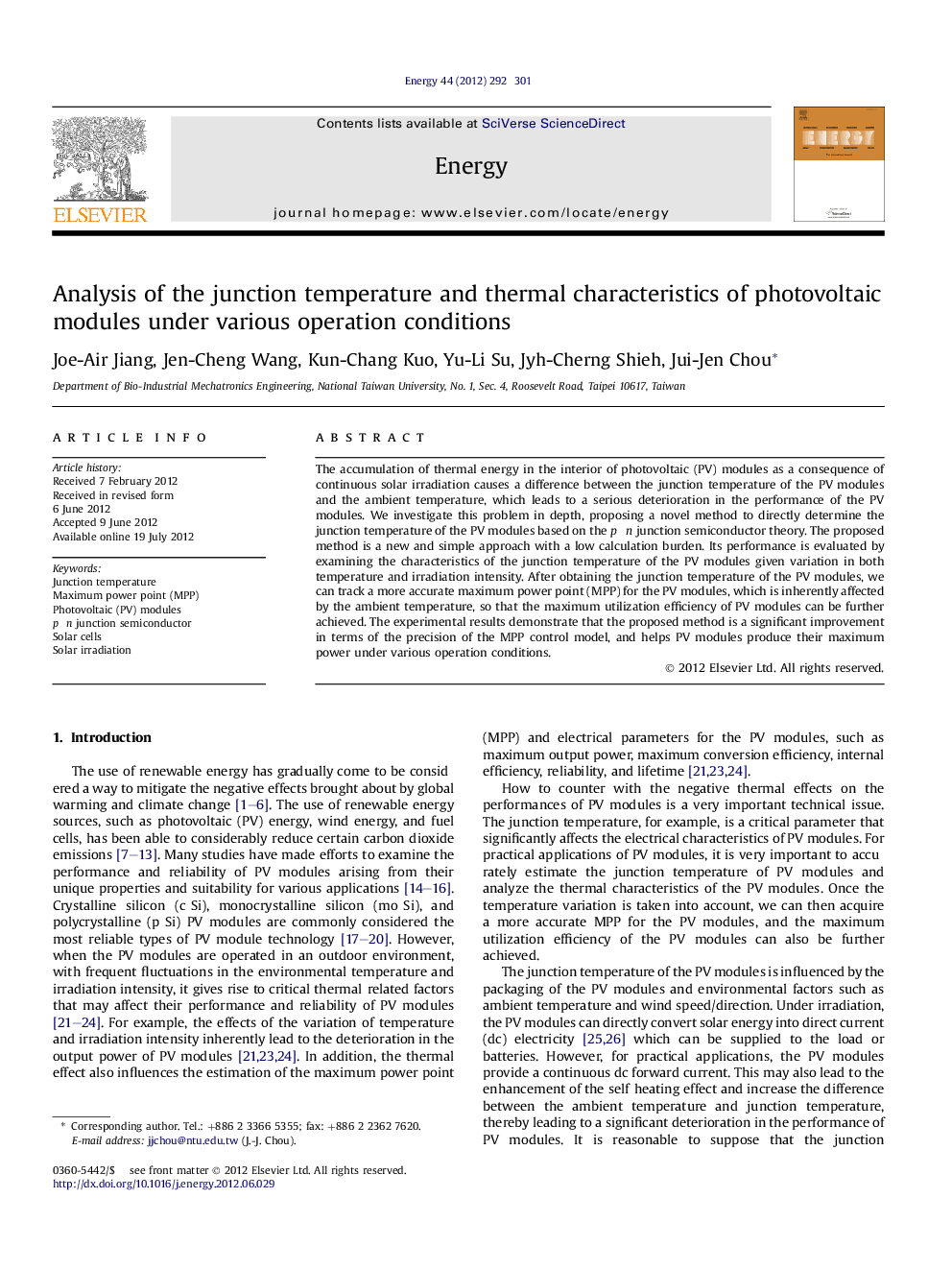| کد مقاله | کد نشریه | سال انتشار | مقاله انگلیسی | نسخه تمام متن |
|---|---|---|---|---|
| 1733564 | 1016143 | 2012 | 10 صفحه PDF | دانلود رایگان |

The accumulation of thermal energy in the interior of photovoltaic (PV) modules as a consequence of continuous solar irradiation causes a difference between the junction temperature of the PV modules and the ambient temperature, which leads to a serious deterioration in the performance of the PV modules. We investigate this problem in depth, proposing a novel method to directly determine the junction temperature of the PV modules based on the p–n junction semiconductor theory. The proposed method is a new and simple approach with a low calculation burden. Its performance is evaluated by examining the characteristics of the junction temperature of the PV modules given variation in both temperature and irradiation intensity. After obtaining the junction temperature of the PV modules, we can track a more accurate maximum power point (MPP) for the PV modules, which is inherently affected by the ambient temperature, so that the maximum utilization efficiency of PV modules can be further achieved. The experimental results demonstrate that the proposed method is a significant improvement in terms of the precision of the MPP control model, and helps PV modules produce their maximum power under various operation conditions.
► A novel method to directly determine the junction temperature of PV modules from irradiated I–V curves is proposed.
► The junction temperature of the PV modules under various operation conditions can be simply estimated.
► A series of experiments were conducted to examine the effectiveness of the method.
► The proposed method improves the precision of the MPP control model and helps PV modules provide the maximum power output.
Journal: Energy - Volume 44, Issue 1, August 2012, Pages 292–301